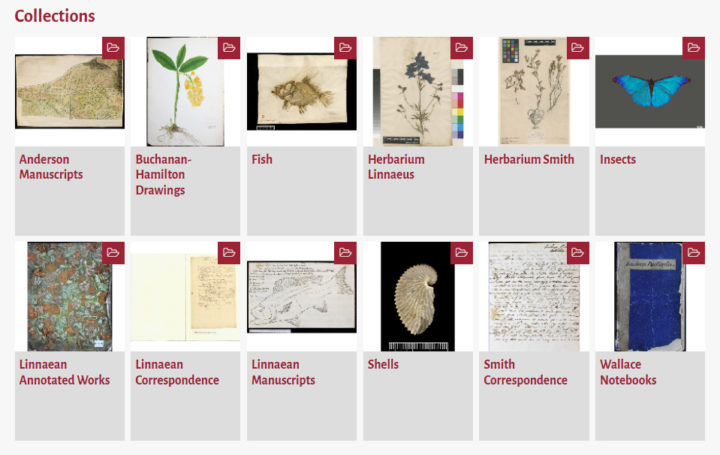Our Digitised Collections
This month’s treasure is our digitised collections (and an excuse to plug their new home!).
Published on 23rd April 2025

A long, long time ago (2003), the Library Collections and Biological Collections committees (now amalgamated as the Collections Committee) at the Linnean Society formed the very official-sounding CARLS Task Force. CARLS - a nod to our namesake Carl Linnaeus - was an acronym for a very clunky-sounding but ambitious undertaking for such a small society: Computerised Access to Records of the Linnean Society.

The plan: to digitise and make available the Society’s Linnaean specimen collections.
The bigger plan: to digitise and make available all of Linnaeus’ collections (specimens and archives) as well as other important foundational collections, including James Edward Smith’s herbarium.
With generous funding and support, by 2006, the Linnaean specimens and Smith's herbarium were being photographed at the Natural History Museum, while the Linnaean Correspondence was conserved and photographed at the University of Dundee.
In 2011, the Society was able to purchase its own digitisation equipment, and the remainder of the digitisation projects were completed in-house.
The result: Over 61,000 records with over 218,000 images, including…
- Linnaeus’ herbarium, insects, shells, fish, manuscripts, correspondence, and annotated books;
- James Edward Smith’s herbarium and correspondence;
- Alfred Russel Wallace’s notebooks and travel diaries;
- Francis Buchanan-Hamilton’s collection of drawings of plants and animals from Nepal, India, and Bengal;
- Alexander Anderson’s manuscripts and drawings from St Vincent Botanic Garden and the Caribbean.

The “Online Collections”, as they came to be known, were hosted in an EPrints-based repository for many years and were accessed and used by researchers worldwide.
The story could stop there. The long-since inactive CARLS Task Force had achieved its goal. However, things had moved on digitally, especially since the Society was relatively early to the digitisation game. And, having the different collections digitised by different teams over a period of ten years, there was an inconsistency in what and how metadata was captured, leading to record fields being used in non-uniform ways. Also, with the implementation of our Records Management Programme, there was a recognition that we would need somewhere to keep the Society’s growing digital domestic archive.
The new plan: With standardisation and growth in mind, it was decided the “Online Collections” needed to move on. In 2024, we chose Preservica’s digital preservation solution. This move enabled us to keep our already much-accessed digitised collections and will allow us to eventually build our digital domestic archive, knowing these digital records will be safely preserved for future generations.
For over a year, we have been working to standardise and add more metadata to the existing digitised collections. We have been working closely with Preservica to ensure everything we had in the old repository was moved over. This new platform will allow us to update and add new metadata more easily to existing records as new information about these specimens and archives come to light.
The result: LINNEAN ONLINE

We are pleased with how the new platform looks and works. We are even more pleased that we can continue to share these scientifically and historically significant collections with the world. Happy browsing!
Andrea Deneau, Digital Assets Manager












